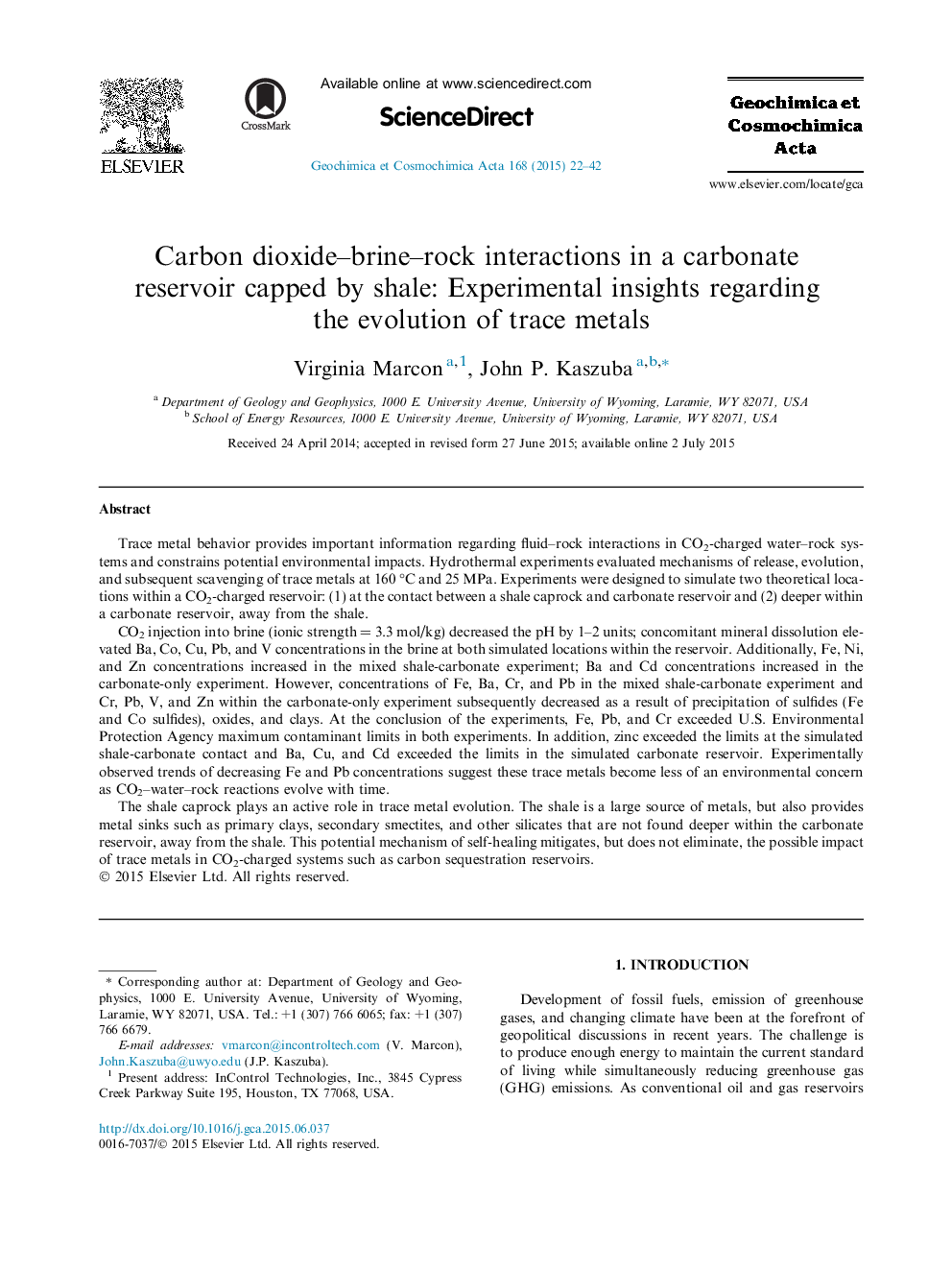| کد مقاله | کد نشریه | سال انتشار | مقاله انگلیسی | نسخه تمام متن |
|---|---|---|---|---|
| 4701867 | 1637989 | 2015 | 21 صفحه PDF | دانلود رایگان |
Trace metal behavior provides important information regarding fluid–rock interactions in CO2-charged water–rock systems and constrains potential environmental impacts. Hydrothermal experiments evaluated mechanisms of release, evolution, and subsequent scavenging of trace metals at 160 °C and 25 MPa. Experiments were designed to simulate two theoretical locations within a CO2-charged reservoir: (1) at the contact between a shale caprock and carbonate reservoir and (2) deeper within a carbonate reservoir, away from the shale.CO2 injection into brine (ionic strength = 3.3 mol/kg) decreased the pH by 1–2 units; concomitant mineral dissolution elevated Ba, Co, Cu, Pb, and V concentrations in the brine at both simulated locations within the reservoir. Additionally, Fe, Ni, and Zn concentrations increased in the mixed shale-carbonate experiment; Ba and Cd concentrations increased in the carbonate-only experiment. However, concentrations of Fe, Ba, Cr, and Pb in the mixed shale-carbonate experiment and Cr, Pb, V, and Zn within the carbonate-only experiment subsequently decreased as a result of precipitation of sulfides (Fe and Co sulfides), oxides, and clays. At the conclusion of the experiments, Fe, Pb, and Cr exceeded U.S. Environmental Protection Agency maximum contaminant limits in both experiments. In addition, zinc exceeded the limits at the simulated shale-carbonate contact and Ba, Cu, and Cd exceeded the limits in the simulated carbonate reservoir. Experimentally observed trends of decreasing Fe and Pb concentrations suggest these trace metals become less of an environmental concern as CO2–water–rock reactions evolve with time.The shale caprock plays an active role in trace metal evolution. The shale is a large source of metals, but also provides metal sinks such as primary clays, secondary smectites, and other silicates that are not found deeper within the carbonate reservoir, away from the shale. This potential mechanism of self-healing mitigates, but does not eliminate, the possible impact of trace metals in CO2-charged systems such as carbon sequestration reservoirs.
Journal: Geochimica et Cosmochimica Acta - Volume 168, 1 November 2015, Pages 22–42
